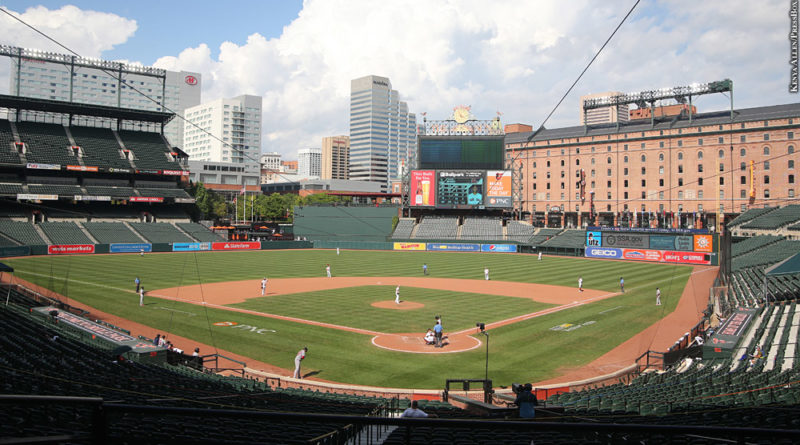People ask me what I do in winter when there’s no baseball. I’ll tell you what I do. I stare out the window and wait for spring.”
The quote above is from Hall of Famer Rogers Hornsby and is emblazoned upon an otherwise blank beige wall as you walk into Ed Smith Stadium in Sarasota, Fla., and scurry past the souvenir shop to grab your first glimpse of another spring.
It’s a rite of passage that has been muddied the past two seasons due to the COVID-19 pandemic. It is now being impacted for a third consecutive year due to the myopic views of a few people that hold the spring in the palms of their hands but couldn’t care less about how this lockout sits with the great fans of this greatly diminished game.
While fans understand the technical necessity of the lockout, it’s apparent that commissioner Rob Manfred’s stated intention of the lockout in his letter to fans written on Dec. 2, 2021, doesn’t really ring true months later.
“To be clear, this hard but important step does not necessarily mean games will be canceled,” Manfred told fans. “In fact, we are taking this step now because it accelerates the urgency for an agreement with as much runway as possible to avoid doing damage to the 2022 season. Delaying this process further would only put spring training, Opening Day, and the rest of the season further at risk.”
Exactly what urgency was accelerated by the lockout? MLB and the MLB Players Association didn’t sit down with one another in person until late January, nearly seven weeks after the lockout was instituted. It may sound as if I am scolding just the owners, but it’s also incumbent upon the MLBPA and its leadership to have found ways to get the owners to the table without any severe lapses in communication.
Think about that Hornsby quote for a minute and think of all the things affected by this impasse that would and could be solved through good faith negotiations. Think about the fans with trips to Florida and Arizona on hold. Think of the millions of taxpayer dollars spent on these new or refurbished spring stadiums to attract baseball fans. Both sides owe more than a self-interest-laden apology for impacting the spring.
Think of the teams that are hearing crickets selling their season ticket packages and single-game tickets. How likely are you to purchase that new Trey Mancini jersey when you don’t know when he will be wearing one like it?
In early February, MLB requested help from the Federal Mediation and Conciliation Service to break the logjam. Not surprisingly, the MLBPA shot down that request. New York Mets right-hander Max Scherzer summed up the players’ view of mediation in a Feb. 4 tweet.
“We want a system where [thresholds] and penalties don’t function as caps, allows younger players to realize more of their market value, makes service time manipulation a thing of the past, and eliminate tanking as a winning strategy,” wrote Scherzer, a member of the MLBPA’s executive subcommittee.
But for just a brief moment, let’s pretend I could wave a magic wand and serve as an intermediary for the owners and players. How would I create a fair system that might satisfy both sides?
1. Drop the sixth year it takes for players to get to free agency and take it to five. The six-year number has been around for 45 years. Going to five would be a significant win for the players. As part of this change, the arbitration system could be overhauled to the owners’ liking.
2. Create an eight-year plan to increase minimum salaries from the current $570,500 to $660,000 for 2022 and 2023, $710,000 for 2024, 2025 and 2026 and $775,000 for 2028 and 2029.
3. Create a salary floor for teams aimed at putting more total dollars into players’ pockets and taking dead aim at tanking. Like my minimum salary play, it would start at a very fair number for owners — $60 million in 2022 and 2023. It would then rise to $72.5 million in 2024, 2025 and 2026 and finally move to $82.5 million for the 2027, 2028 and 2029 seasons. Expected increases might level off in the next several years after that, only going up in small increments.
4. Create a draft lottery system. There is no reason for me to put forth all the current ways other leagues handle this, but a modified version of the NBA system makes the most sense.
5. Increase the luxury tax threshold ($210 million in 2021) and lessen the penalty for teams that go over.
6. Eliminate service-time manipulation, though the solutions can be complicated.
7. On-field changes start with adding the universal DH, which would keep productive players in the game longer and create additional jobs for everyday players.
8. Alex Rodriguez mentioned in 2020 that the players should be receptive to a revenue-sharing system with an eye toward growing the game. Without getting into a salary cap, I am proposing that the two parties agree to work on jointly-agreed-upon initiatives that impact the game and provide substantial revenues for both.
By the time you’ve read this, hopefully the owners and players will have come to an agreement. If not, maybe if all baseball fans can collaboratively throw some mixture of pixie dust and the mud used to rub up baseballs, we may just be able to save a badly needed season.
Photo Credit: Kenya Allen/PressBox
Issue 273: February/March 2022
Originally published Feb. 16, 2022

